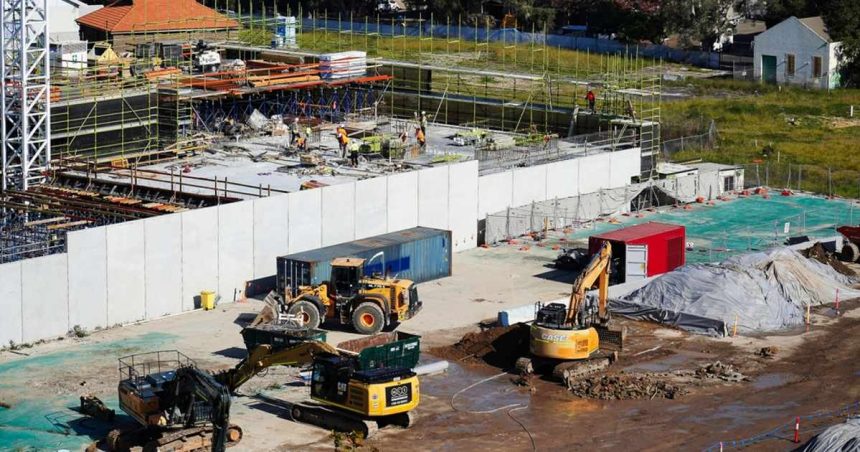Inflation figures are once again heading the wrong way, causing billion-dollar construction projects that prop up the industry to decline for the first time in two years.
Recent data from the Australian Bureau of Statistics (ABS) has revealed that the seemingly curving inflation rate had spiked back up to 4 per cent in May, putting pressure back on construction businesses and their costly project pipelines.
Rising housing costs once again seemed to be the number one driver dragging down monthly inflation, with worries of project affordability causing the first drop in engineered construction activity in the last two years.
Master Builders CEO Denita Wawn said the reversal in activity for projects that once propped up the industry’s productivity were an ominous sign of what’s to come.
“Builders are pulling their hair out over their concerns continuously falling on deaf ears,” said Wawn.
“On the ground, we continue to hear projects for new homes, commercial or infrastructure construction simply don’t stack up because it takes too long to build and is too costly.
“Inflation is a capacity killer, making investment more expensive and less attractive.”
With all three pillars of construction now moving in the wrong direction, Ms Wawn says it’s time for the government to get serious about saving the industry.
“We know governments have acknowledged that more reform is needed to reduce building costs but the rubber needs to hit the road,” she said.
“Bringing down housing and rental inflation can only be achieved once we get a move on and speed up planning reforms, address tradie shortages through domestic and skills migration pathways, reform the regulatory environment, and scrap damaging elements of recent IR changes.
“Looking ahead, Australia’s economic challenges will only be compounded by new pattern EBAs rolling out across the industry which will increase costs and drag productivity backwards.
“If we don’t get inflation under control and urgently start boosting housing supply we are in for a lengthy period of pain and depressed construction activity.”
Wage hikes aren’t helping
But inflation isn’t the only pressure pushing builders to tighten their belts. Recent almost-universal wage hikes across the country have seen labour costs skyrocket in recent months, forcing budgets to blow on some of the country’s biggest worksites.
A report released last week by consultancy group Arcadis and the Australian Constructors Association (ACA) found that the wage crisis, along with the stagnant productivity growth in the sector, was placing a cap on what governments could afford to build.
“The disparity of wages between government and private sector projects has left the private sector unable to compete with a staggering 81 per cent of respondents reporting either stagnation or decline in the residential construction sector,” said ACA CEO Jon Davies.
“We can’t afford to continue with business as usual; project planning needs to be improved and construction costs need to be lowered to ensure the country can afford the infrastructure it needs.”
The ACA is of course referring to impressive pay deals struck by the juggernaut CFMEU that saw tradies in some states receive a pay bump of over 20 per cent.
Under the new agreement, union members on Big Build construction sites working a six-day week in Victoria are easily raking in over $200,000 a year.
RELATED: Union boss defends six-figure salaries for stop sign holders
With the hope of getting industry prices back on track, Ms Wawn called on government officials to re-establish industry-specific regulators to keep the increasingly powerful union leaders in check.
“Unfortunately, the industry, which is at the coalface of overcoming the housing crisis and delivering the essential infrastructure that communities are crying out for, has been left powerless by an increasingly aggressive construction union,’ she said.
“Enough is enough. It’s time to bring back an industry-specific regulator with real teeth and restore confidence in the building and construction industry.”







